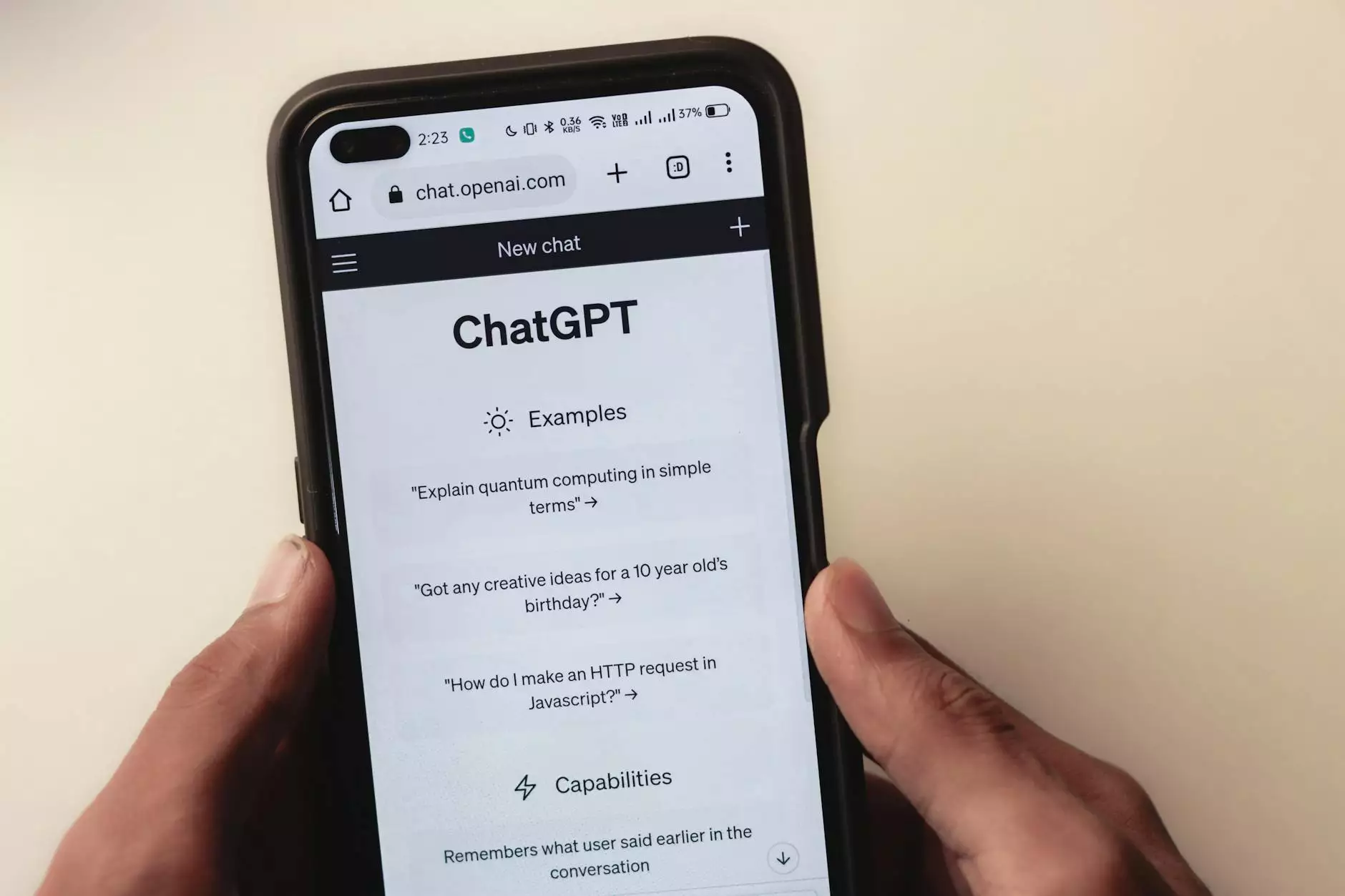How to Post to Your Personal Facebook Page (Instead of Your Business Page)
Blog
Introduction
Welcome to Aperture Group, the go-to consulting and analytical services provider for businesses and consumers. In this comprehensive guide, we will walk you through the process of effectively posting content to your personal Facebook page instead of your business page.
The Importance of Personal Facebook Pages
In today's digital age, having a strong online presence is crucial for individuals and businesses alike. While business pages are great for promoting products and services, personal Facebook pages allow you to connect with friends, family, and a wider audience on a more personal level.
Step-by-Step Guide
Step 1: Log into Your Facebook Account
The first step in posting to your personal Facebook page is to log into your Facebook account. You can do this by visiting www.facebook.com and entering your login credentials.
Step 2: Access Your Personal Profile
Once logged in, you will be directed to the Facebook homepage. To access your personal profile, click on your profile picture or name at the top of the page. This will take you to your personal Facebook timeline.
Step 3: Compose Your Post
Now that you are on your personal timeline, you can begin composing your post. Click on the "Create Post" button or the text box that says "What's on your mind?" to start typing your message. You can include text, photos, videos, and links in your post. Be sure to customize your content based on your intended audience.
Step 4: Choose Who Can See Your Post
Before publishing your post, it's important to select the audience you want to share it with. You can choose to make it visible to the public, friends only, specific friend lists, or even customize the privacy settings for each individual post. This ensures that your content reaches the right audience without compromising your online privacy.
Step 5: Add Tags and Location (If Applicable)
If your post is relevant to a particular location or if you want to tag specific individuals or pages, you can do so by clicking on the respective options below the post box. Adding location tags and tagging relevant people or pages can help increase the visibility and engagement of your post.
Step 6: Review and Publish
Once you have composed your post, chosen the appropriate privacy settings, and added any relevant tags or locations, take a moment to review your content. Ensure that it aligns with your intended message and reflects your personal brand effectively. Once you are satisfied, click the "Post" button to publish your content.
Best Practices for Personal Facebook Page Management
1. Engage with Your Audience
Building meaningful connections is key to leveraging your personal Facebook page effectively. Respond to comments, engage in conversations, and show genuine interest in your audience's opinions. This helps foster relationships and encourages increased interaction with your content.
2. Share Relevant and Authentic Content
To establish your personal brand on Facebook, share content that is authentic, valuable, and relevant to your interests and expertise. This could include personal updates, industry news, thought-provoking articles, or engaging multimedia.
3. Maintain a Consistent Posting Schedule
To keep your audience engaged and active, it is important to maintain a consistent posting schedule. Aim for a balance between active participation and overwhelming your audience with excessive content. Experiment with different posting times and analyze engagement metrics to determine the optimal schedule for your personal page.
4. Utilize Facebook's Features and Tools
Facebook offers a range of features and tools to enhance your personal page. Make use of features such as Facebook Live, events, polls, and fundraisers to engage your audience in unique and interactive ways. Stay updated with new features and explore creative ways to incorporate them into your content strategy.
5. Leverage Facebook Groups and Communities
Join relevant Facebook groups and communities that align with your interests or professional goals. Actively participate, provide valuable insights, and avoid excessive self-promotion. This allows you to expand your network, learn from industry peers, and gain exposure to a wider audience.
Conclusion
With this comprehensive guide, you now have a better understanding of how to effectively post to your personal Facebook page instead of your business page. Remember to maintain a balance between personal and professional content, engage with your audience, and leverage Facebook's features to enhance your online presence. By implementing the best practices mentioned, you'll be able to maximize the potential of your personal Facebook page and strengthen your online brand.
For more industry-leading consulting and analytical services, visit Aperture Group's websitehttp://apertureabc.com/ today!




